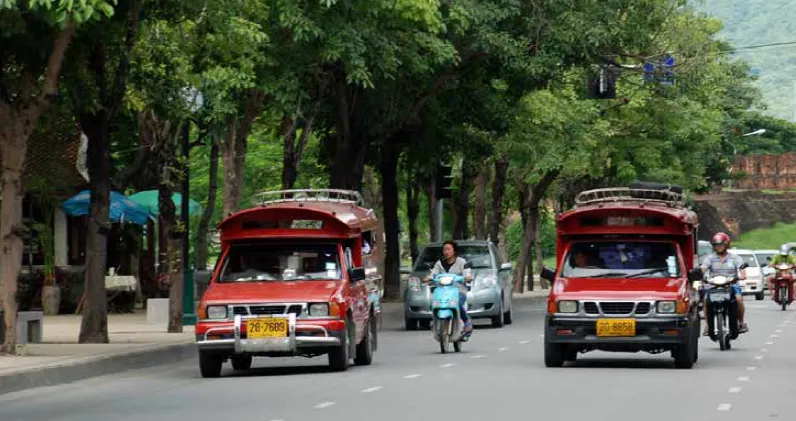
The healthcare gap between Bangkok and tier-two cities
Why the healthcare industry in Thailand’s tier-two cities has lagged behind, and how that’s about to change for the better.
Among the Southeast Asian economic peer group, Bangkok has long been one of the major cities in economic development and healthcare infrastructure. Unfortunately, and to the detriment of the country’s tier-two cities, the story has been left there.
Since the development of healthcare has usually been viewed in aggregate terms, dispersing this development has been regarded as a secondary concern. This has resulted in tier-two cities’ private healthcare industry being generally smaller and less adequate compared to Bangkok’s. On the bright side, this mindset is about to benefit tier-two cities as industry growth.
A clear, quantifiable understanding of how wide the healthcare gap has been between Bangkok and the second tier is necessary in order to fully appreciate the process of narrowing the gap. Data provided by Sittichai Duangrattanachaya, healthcare analyst at Maybank Kim Eng Thailand, show that, in Bangkok, there is one doctor for every 1,075 people, and one nurse for every 285. While this may initially seem inadequate, this measure is 59 % and 43% better, respectively, than what is seen in second tier cities. There are also 3.7 beds per 1,000 people in Bangkok, 54% better than in second tier cities. This data is accurate as of over a year ago.
Brushing up
Clearly, the availability of healthcare professionals and facilities in Bangkok relative to the population is much more adequate than what is seen in Thailand’s tier-two cities. However, in spite of this, the situation in 2013 is still a marked and notable improvement from what was observed in 2007.
Hospital beds per 1,000 people in second tier cities have increased by 16% from 2007 to 2013. Moreover, the number of people per every one doctor have also declined by 15%, and the number of beds per doctor have decreased by 18% over the said period. This notable improvement in the state of healthcare within the country’s tier-two cities is mostly attributed to the introduction of the National Health Security Scheme in 2003, as well as the Social Security Scheme in 2005.
One of the major causes of the existing healthcare gap between Bangkok and tier-two cities is the lack of higher-income prospects in tier-two cities, which ultimately discourage healthcare investments from the private sector. Duangrattanachaya says that Bangkok Dusit Medical Services prefers to build hospitals in Bangkok as it seeks to serve mid-income and foreign patients “who have insurance coverage and high disposable income.”
Prospective patients from tier-two cities are captured by the private sector mostly through referral programs. Thus, due to the private sector’s lack of interest in tier-two cities, most of healthcare spending in these areas have been due to the government. According to Wanwadee Tiavongsuvan, senior consultant at Solidiance, the public sector contributes over 99% of total healthcare spending in Thailand.
At this point, it becomes clear that the key to improving the healthcare industry in Thailand’s second tier cities lies in improving household incomes since, as mentioned earlier, the abundance of low-income prospective patients is what drives away private investment in the first place.
Rapid urbanisation
One of the most important drivers of improving household incomes in Thailand’s second tier cities is increasing urbanisation in areas outside Bangkok. “Urbanisation rates in second tier cities have doubled those of Bangkok and its vicinities. While the growth rate of urbanization in Bangkok’s vicinities is less than 10% annually, the same growth in second tier cities have averaged at 57% in the same period,” says Tiavongsuvan.
Data show that household incomes have increased along with the increase in urbanisation, implying that they are, at the very least, correlated. For instance, from 2000 through 2011, household incomes have more than tripled in Surat Thani, and more than doubled in Ubon Ratchathani and Songkhla.
As a result of growing household incomes in Thailand’s second tier cities, “private hospitals in Thailand are targeting second tier cities because of the expected growing demand for healthcare services boosted by increasing urbanization and the ASEAN Economic Community,” says Tiavongsuvan. This is especially true of Thailand’s publicly listed hospitals, where growth is of utmost importance.
Duangrattanachaya confirms this by pointing our that 90% of planned hospital capacity expansion is currently allocated to the areas of second tier cities. Major hospital chains in Thailand such as Bangkok Dusit Medical Services, Ramkhamhaeng Hospital Chain, and Bangkok Chain Hospital have all recently expressed commitments to ramping up their presence and operations within Thailand’s second tier cities.
Another driver set to further increase demand for healthcare in Thailand is the ageing population. Duangrattanachaya notes that the proportion of older citizens to the rest of the population is likely to increase to 9% in 2016 and 10% in 2020, from around 8% in 2013.
The rise of tertiary healthcare
Improving overall incomes and wealth have not only opened the door to more services and consequently, better healthcare for Thailand’s second tier cities, but have also paved the way for the rise of tertiary healthcare. In a nutshell, tertiary healthcare mostly has to do with elective treaments such as cosmetic surgery, as opposed to primary and secondary healthcare which is more geared toward non-elective treatments.
Tiavongsuvan says medical tourism in Thailand has been growing at a healthy pace. Medical tourism in Thailand from 2008 through 2013 has grown by a CAGR of 17% in terms of number of patients, and by a CAGR of 28% in terms of revenues. A key driver of this growth has been the cost competitiveness of Thailand’s medical tourism industry. Duangrattanachaya notes that the cost of treatment in Thailand is 20% lower than in Singapore, and the quality of service in Thailand is also better than in Malaysia and Singapore.
Tiavongsuvan notes that there is evidence that the growth of urbanization and, thus, household incomes within Thailand’s second tier cities is likely to lead to the growth of not only primary healthcare facilities and services, but tertiary or elective services as well. “In response to growing purchasing power within second tier cities, the supply of medical care in second tier cities is now ranging from primary to tertiary care with a comparatively higher number of private hospitals in the provinces.”
However, unlike the outlook for primary and secondary healthcare in Thailand’s second tier cities, the outlook for the tertiary healthcare industry is not as unanimously positive. Duangrattanachaya notes that the medical tourism industry in Thailand faces competitive threats especially from Middle Eastern countries whose investments in medical tourism infrastructure have recently been aggressive.
Thus, according to Duangrattanachaya, “we see potential growth, but the speed of growth may not be as high as the past decade.” Nevertheless, the effect of global competition on Thailand’s medical tourism industry should likely be partially offset by rising incomes within Thailand’s second tier cities (paving the way for domestic medical tourism).
Whether it be primary or tertiary healthcare, it is clear that Thailand’s tier-two cities need more of it, and better quality. However, given the current direction, this shouldn’t be a problem for long.



















 Advertise
Advertise





